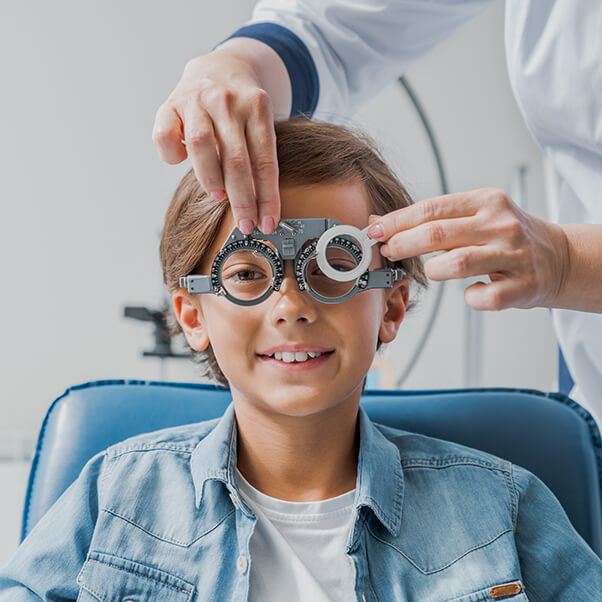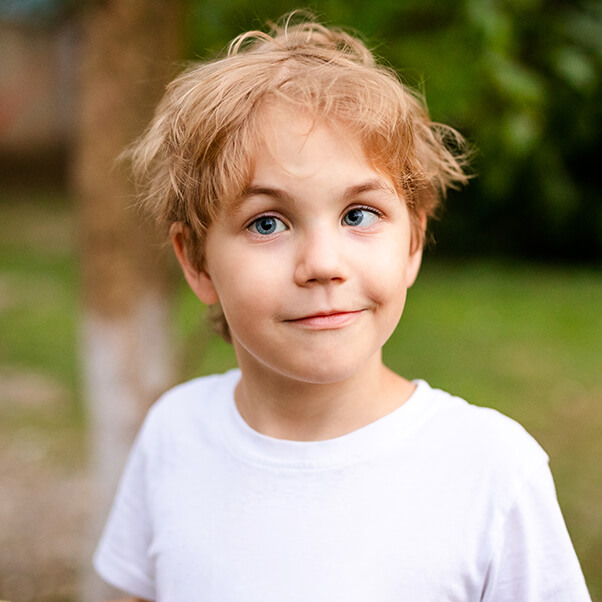
Children don’t always know that they are having a problem with their vision, so they assume that everyone sees the way they do. Fortunately, schools and daycare centers often provide regular eye screenings that can detect some fundamental vision problems.
Pediatricians and nurse practitioners usually include primary vision screening in a well-child office visit. They understand that good vision plays a vital role in a child’s well-being. It is critical to their learning, social interactions, and development.
When a vision screening detects problems with a child’s vision, local pediatricians and schools refer the child to Northwest Eye. What makes our pediatric eye specialists Dr. Richard Freeman, Dr. W. Keith Engel,
Dr. Alejandra Decanini, Dr. Tanya Glaser and Dr. Catherine Origlieri, the leaders in providing pediatric eye care in Minnesota?
The answer is easy! We know kids, understand how they communicate, and have learned how to put them at ease. Most importantly, we recognize the unique differences between a developing eye and an adult eye.
What Signs of Eye Problems Should Parents Watch for in Their Child?
Be Eye Wise: Parents may notice signs of eye problems at home that are not detected when their child has a vision screening. Besides showing signs of learning difficulties that teachers may see at school, children may exhibit:
- Blurriness or double vision
- Tilting their head or turning it to one side
- Repeatedly squinting or keeping one eye closed to see better
- Red, crusty, or swollen eyelids
- Frequently rubbing their eyes
- Recurrent headaches
- Sitting too close to the TV
- “Cloudy looking” pupil(s)
What is the Difference Between a Vision Screening and a Comprehensive Eye Exam on a Child?
Children’s eye exams are very different from adult exams. One noticeable difference is that young children can’t read letters on a screen for visual acuity testing.
Doctors can’t usually rely on children to describe what they are seeing or experiencing, so they need to use objective measurements. For instance, they may use a flashlight and ophthalmoscope to examine the eye and look for irregularities and pupil abnormalities.
Your Northwest Eye pediatric specialist will tailor the exam to the age and ability of the child. The goals are to:
- Measure the clarity of vision
- Assess eye alignment and eye movements
- Check for nearsightedness, farsightedness, and astigmatism (an imperfection in the eye’s curvature)
- Look at the health both inside and outside the eye. (Looking inside the eye usually requires dilating the child’s pupils with eye drops)
- Examine for focusing problems, poor depth perception, and color blindness.

What is Strabismus?
Strabismus is a lack of coordination between the two eyes. It is a common condition among children, affecting about 4% of the U.S. population.
One familiar example is the appearance of “crossed eyes” when the eyes are misaligned. Strabismus usually involves problems with the muscle control of the eye.
The ultimate result is that the eyes cannot focus on objects correctly and can cause:
- Double vision
- Vision in only one eye
- Diminished depth perception
Strabismus is a vision development issue, and it should be treated in childhood to avoid permanent vision problems in adulthood.
How is Strabismus Treated?
The good news is that it can be treated in a variety of ways. Different kinds of strabismus require different treatments, including:
- Glasses
- Eye patching
- Ophthalmic prism lenses
- Eye exercises
- Eye muscle surgery
For more detailed information, see our separate section on Eye Alignment.

What is Ambylopia?
Ambylopia (“lazy eye”) is a type of strabismus that causes reduced vision in one eye but not the other. Amblyopia occurs when one eye doesn’t correctly transmit visual signals to the brain. The brain ignores these signals, and the eye becomes weak and suffers a loss of vision.
How is Ambylopia Treated?
Using an eye patch on the stronger eye to strengthen the weaker eye can be a very effective method of treating amblyopia.
Be Eye Wise: If amblyopia is not treated before age 8, the vision loss is likely to be permanent.
Did You Know That Young Children Can Have Cataracts?
Most people don’t realize that children can be born with cataracts, which means the eye’s natural lens appears cloudy instead of a usually clear lens. This condition is known as congenital (present from birth) cataracts.
The most obvious symptom of a congenital cataract is a “cloudy” or grey-looking pupil in a child’s eye. This condition can interfere with a child’s vision, especially if the cataract is in both eyes.
An early eye exam by one of our pediatric ophthalmologists, Dr. Richard Freeman, Dr. W. Keith Engel, Dr. Alejandra Decanini, or Dr. Catherine Origlieri, can detect whether a cataract is present.
How Are Congenital Cataracts Treated?
Not every congenital cataract must be removed. Our highly skilled Northwest Eye specialists will determine how to treat the cataract after a thorough examination.
Like adult cataract surgery, congenital cataract surgery involves removing the affected lens and replacing it with an intraocular lens (IOL). The new artificial lens will allow the child’s vision system to develop normally, and clear vision will be restored.
At Northwest Eye, our team of compassionate pediatric ophthalmologists understands that having a child diagnosed with an eye disorder can be frightening. We work hard to inform parents of their options and help set their minds at ease.












